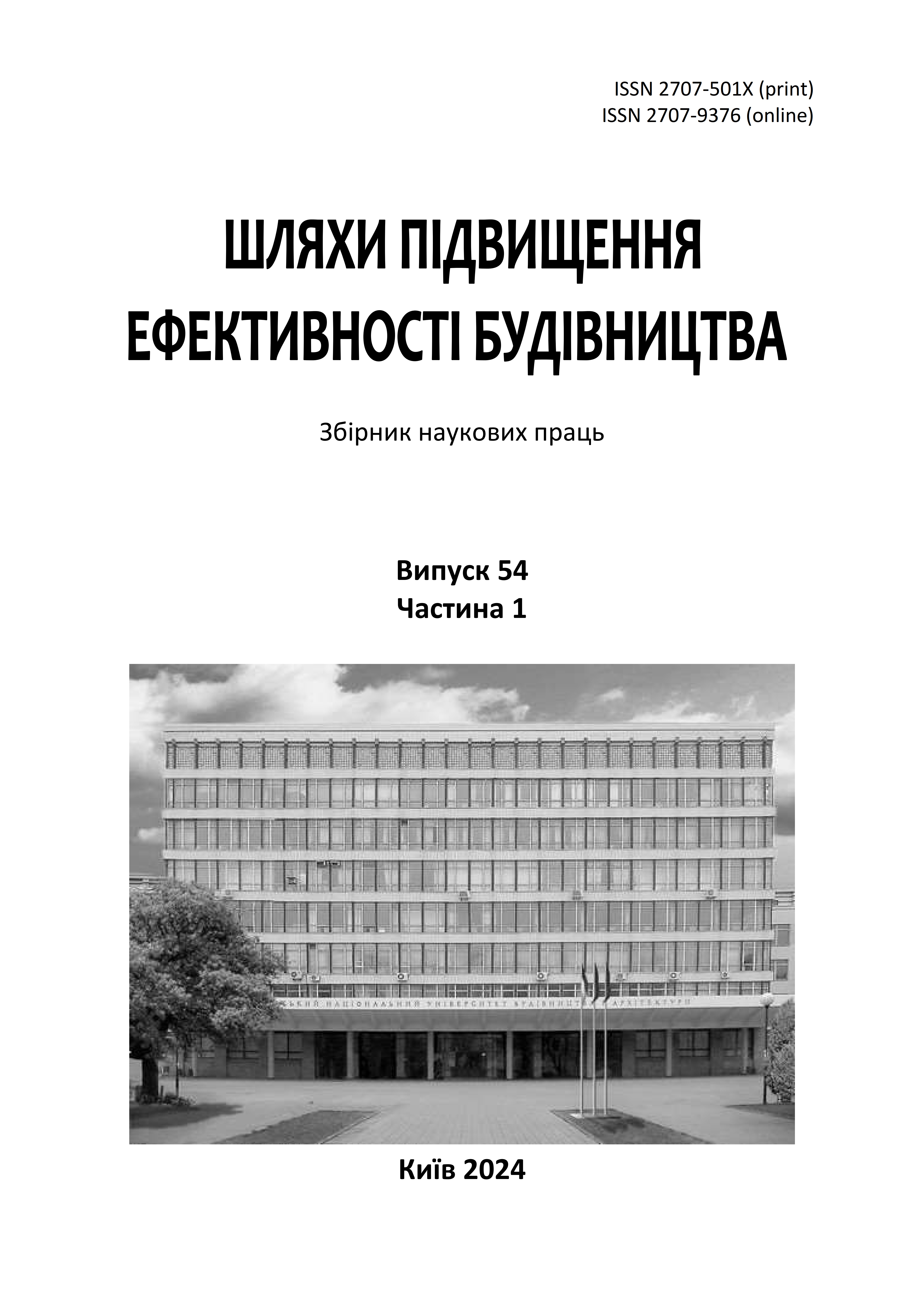Internal control of labour remuneration as a component of cost management in a construction company
DOI:
https://doi.org/10.32347/2707-501x.2024.54(1).246-257Keywords:
labour remuneration, internal control, management of personnel costs, salary, construction company, analysis of the salary fundAbstract
The article is devoted to the issue of formation of effective internal control of labour remuneration at construction enterprises as an important component of cost management. The article proposes a methodical approach to organisation of internal control of labour remuneration, identifies its main stages: regulatory and legal support, planning and labour rationing, accounting of working hours and documentation, control over compliance with labour legislation, control of payroll and deductions from the payroll fund, analysis of the structure of the payroll fund and assessment of efficiency of its use, feedback and adjustment of control methods.
It is determined that the role of internal economic control is to ensure the correctness of cost accounting, compliance with labour legislation, minimise the risks of cost overruns and develop ways to optimise labour costs. Control contributes to the formation of a transparent system of interaction between the company's departments, efficient use of labour resources, prevention of financial abuse and achievement of strategic goals.
The authors emphasise the importance of accounting and analytical support, regulatory frameworks and the use of modern control methods that improve the quality of management decisions. Particular attention is paid to the analysis of the structure of the labour remuneration fund and the efficiency of its use. It has been found that systematic audits, regular monitoring and data analysis help to identify reserves, optimise costs and ensure the competitiveness of the enterprise. It is recommended to introduce a unified information system to integrate accounting and control processes between the enterprise's departments.
The study has identified a number of problems in the system of internal control of labour remuneration at construction enterprises, in particular, errors in documentation, difficulties with accounting for liabilities and classification of payments. These processes need to be improved to improve the efficiency of managing personnel costs.
References
Будько О.В., Лобас І.С. Удосконалення організації обліку праці та розрахунків з персоналом на підприємстві. Вісник Хмельницького національного університету. 2020. №2. С. 37-41.
Гуцаленко Л.В., Каправа О.С. Облік оплати праці: проблеми та напрями вдосконалення. Бухгалтерський облік, аналіз та аудит. 2018. №18. С.894-898.
Макаренко А.П., Кацай К.О. Удосконалення аудиту нарахування заробітної плати на підприємстві. Економіка та держава. 2020. №1. С. 40-45.
Матюха М.М., Божок К.К. Удосконалення організації обліку оплати праці на виробничих підприємствах. Міжнародний науковий журнал «Інтернаука». 2021. №15 (115). С. 32-36.
Меліхова Т.О., Петренко А.Е. Удосконалення методики внутрішнього аудиту нарахування заробітної плати. Агросвіт. 2019. № 3. С. 38-47.
Очеретько Л.М., Удовиченко Г.І. Удосконалення обліку заробітної плати на підприємстві. Ефективна економіка. 2020. №12. URL: http://www.economy.nayka.com.ua/pdf/12_2020/103.pdf
Подмешальська Ю.В., Панченко А.М. Удосконалення організації обліку заробітної плати. Інвестиції: практика та досвід. 2020. №1. С. 58-63.
Склярук І., Поліщук М. Особливості організації обліку розрахунків з оплати праці в сучасних умовах. Економіка та суспільство. 2023. №47. https://doi.org/10.32782/2524-0072/2023-47-50
Суліменко Л. А., Киян А. В., Вітер С. А. Облік і аналіз розрахунків з оплати праці. Інфраструктура ринку. 2018. Вип. 18. С. 395–404.
Чепець О.Г., Кінебас І.Ю. Шляхи вдосконалення обліку та аудиту розрахунків з оплати праці. Бізнес Iнформ. 2019. №7. С.225-230.
Клименко Я.В. Критерії оцінки розрахунків з провідним управлінським персоналом як чинник забезпечення конкурентоспроможності підприємства. Конкурентоспроможна модель інноваційного розвитку економіки України: матеріали ІІІ Міжнар. наук.-практ. конф., м. Кропивницький, 14 квіт. 2020 р. / М–во освіти і науки України, Центральноукраїн. нац. техн. ун–т. Кропивницький: ЦНТУ, 2020. C.248-250.
Пацула О.І. Аналіз господарської діяльності: навч. посіб. Львів: Львівський державний університет внутрішніх справ, 2014. 337c.
Про затвердження Порядку розрахунку розміру кошторисної заробітної плати, який враховується при визначенні вартості будівництва об'єктів: Наказ Міністерствa регіонального розвитку, будівництва та житлово-комунального господарства України № 281 від 20.10.2016. URL: https://zakononline.com.ua/documents/show/359212___491461
Індекс інфляції: Мінфін. URL: https://index.minfin.com.ua/ua/economy/index/inflation/2024/
Роз’яснення щодо Порядку обчислення середньої заробітної плати у зв’язку з набранням чинності постанови Кабінету Міністрів України від 08.09.2023 № 957 “Про внесення змін до порядків, затверджених постановами Кабінету Міністрів України від 8.02.1995 р. № 100 і від 8.08.2016 № 500: Роз’яснення Міністерство Економіки України від 15.09.2023 р. URL: https://document.vobu.ua/doc/21693
Downloads
Published
How to Cite
Issue
Section
License

This work is licensed under a Creative Commons Attribution 4.0 International License.
Authors who publish with this journal agree to the following terms:
- Authors retain copyright and grant the journal right of first publication with the work simultaneously licensed under a Creative Commons Attribution License that allows others to share the work with an acknowledgement of the work's authorship and initial publication in this journal.
- Authors are able to enter into separate, additional contractual arrangements for the non-exclusive distribution of the journal's published version of the work (e.g., post it to an institutional repository or publish it in a book), with an acknowledgement of its initial publication in this journal.
- Authors are permitted and encouraged to post their work online (e.g., in institutional repositories or on their website) prior to and during the submission process, as it can lead to productive exchanges, as well as earlier and greater citation of published work (See The Effect of Open Access).

